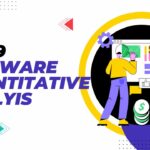The field of intelligence (AI) and natural language processing has seen a rise in the creation of Large Language Models (LLMs) that drive applications from chatbots to content production. With the advancement of models like GPT 3.5 and the significance of llm app evaluation has become crucial for businesses and developers. In this piece we delve into the factors to consider when selecting the LLM application for specific purposes.
Understanding Large Language Model (LLM) Applications
LLM applications are software programs that utilize trained language models such as GPT 3.5 to carry out tasks related to text generation sentiment analysis, language translation and more. These applications make use of the knowledge and linguistic capabilities through gpt 3.5 fine tuning integrated into LLMs to automate text related processes enhance communication and offer responses to user inquiries.
The flexibility of LLM applications makes them invaluable across sectors including customer service, content creation, marketing, healthcare and education. By leveraging the capabilities of LLMs these applications streamline operations boost efficiency and provide personalized experiences for users.
Essential Factors, for Choosing the Right LLM Application
-
Performance and Accuracy:
- Assessing the performance of the LLM application involves reviewing its text generation capabilities, sentiment analysis accuracy and contextual understanding.
- Evaluating the apps precision by examining its responses and the quality of text produced across areas and themes.
-
Customization and Fine-Tuning Options:
- Exploring the apps adaptability in terms of customization and fine tuning to align with business needs.
- Explore ways to adjust the model, for tasks in a field enhance language comprehension and elevate the quality of text creation.
-
Scaling and Integration;
- Examine the apps’ ability to handle increased workloads and adapt to changing business demands.
- Assess how well the app integrates with systems, APIs and platforms, for operation.
-
User Experience and Interface;
- Review the user interface and overall experience of using the LLM app to ensure it is user friendly and accessible.
- Seek out features that improve user engagement offer feedback and facilitate communication.
-
Security and Privacy;
- Give priority to security measures and data privacy protocols in place within the LLM app to safeguard information and comply with regulations.
- Verify how data is handled by the app, encryption methods used and access controls implemented to protect user data.
-
Cost and Licensing;
- Take into account the cost structure, licensing terms and pricing models of the LLM app to match budget restrictions and scalability needs.
- Assess the ROI of the app concerning increased productivity, efficiency gains and business outcomes.
The Importance of Selecting the Correct LLM Application
Choosing the LLM application using the criteria mentioned above can have an effect, on business functions, customer interactions and overall effectiveness. A selected LLM app has the potential to simplify text related tasks improve communication, automate operations and spur innovation in sectors. By utilizing LLM capabilities and refining strategies companies can discover avenues, for development, productivity and ingenuity within their activities.
Conclusion
Ultimately when it comes down to it assessing LLM applications using factors, like effectiveness, personalization, adaptability, user satisfaction, safety and affordability is crucial, in picking the option that fits with business goals and needs. Opting for the LLM app that satisfies these standards enables companies to leverage AI powered text analysis enhance decision making procedures and elevate user engagement in the digital realm.





